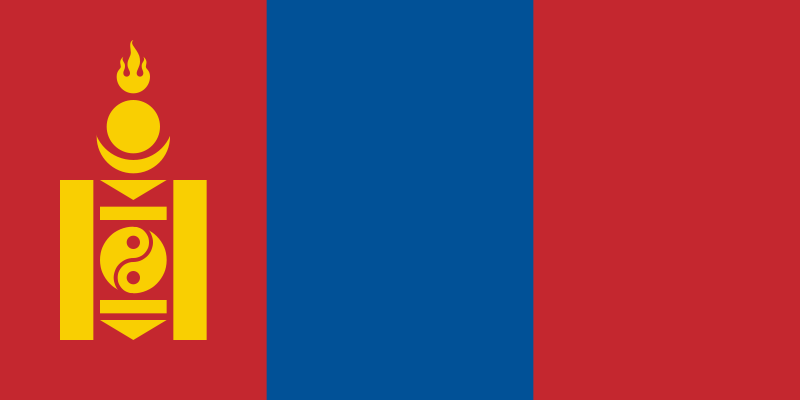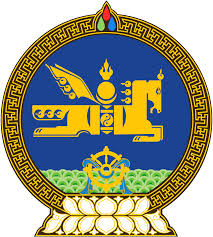Government and politics
Government and Politics
On January 13, 1992, the Parliament adopted a new constitution. The Constitution also restructured the legislative branch of the government by creating a unicameral parliamentary legislature. The Constitution was put into force on February 12, 1992 and amended in 1999 and 2001.
Legislative branch
 The Parliament of Mongolia is referred to as the State Great Khural, which is the highest organ of state power. The Parliament consists of 76 members appointed for a term of four years. The last parliamentary election was held on June 28, 2012 and the next parliamentary election is expected to be held in June 2016.
The Parliament of Mongolia is referred to as the State Great Khural, which is the highest organ of state power. The Parliament consists of 76 members appointed for a term of four years. The last parliamentary election was held on June 28, 2012 and the next parliamentary election is expected to be held in June 2016.
The Parliament confirms the appointment of the Prime Minister and Cabinet ministers. The Parliament has the power to draft legislation, enact and amend laws, approve the annual budget, approve foreign and domestic policies, declare states of emergency and war and ratify international treaties and agreements.
President of Mongolia
![]() The President is the head of state, commander-in-chief of the armed forces and head of the National Security Council. The President is second in authority to the 76-member Parliament. Presidential candidates are nominated by political parties that have at least one seat in the Parliament. Presidents are elected by absolute majority vote to serve a four-year term and are limited to serving two terms. The President is empowered by the Constitution to submit a proposal for the nomination of the Prime Minister, which is then subject to approval by the Parliament, call for dissolution of the Cabinet, initiate legislation and veto all or parts of legislation passed by the Parliament. The President may also confirm appointments of judges, appoint ambassadors, grant pardons and enter into international treaties.
The President is the head of state, commander-in-chief of the armed forces and head of the National Security Council. The President is second in authority to the 76-member Parliament. Presidential candidates are nominated by political parties that have at least one seat in the Parliament. Presidents are elected by absolute majority vote to serve a four-year term and are limited to serving two terms. The President is empowered by the Constitution to submit a proposal for the nomination of the Prime Minister, which is then subject to approval by the Parliament, call for dissolution of the Cabinet, initiate legislation and veto all or parts of legislation passed by the Parliament. The President may also confirm appointments of judges, appoint ambassadors, grant pardons and enter into international treaties.
Executive branch
 The Prime Minister is the head of the executive branch. The Prime Minister and the Deputy Prime Ministers are nominated by the ruling party and confirmed by the President. They are limited to serving a four-year term. The Prime Minister chooses the members of the Cabinet, subject to the Parliament’s approval. The Cabinet appoints and removes deputy ministers on the basis of the proposal of the Prime Minister and the relevant Minister.
The Prime Minister is the head of the executive branch. The Prime Minister and the Deputy Prime Ministers are nominated by the ruling party and confirmed by the President. They are limited to serving a four-year term. The Prime Minister chooses the members of the Cabinet, subject to the Parliament’s approval. The Cabinet appoints and removes deputy ministers on the basis of the proposal of the Prime Minister and the relevant Minister.
The Cabinet is the highest executive body of Mongolia. The Cabinet is in place for a four-year term or a shorter term when it is dissolved upon either resignation of the Prime Minister, simultaneous resignation of half of the Cabinet or parliamentary vote for dissolution. The Cabinet and its ministries are accountable to the Parliament.
The main function of the Cabinet is to implement the laws of Mongolia, in accordance with its duties to direct economic, social and cultural development of Mongolia. The Cabinet is currently coinposed of 16 ministries, which carry out the Cabinet’s various programs and projects and formulate policies in their relevant areas.
The current Government
During Mongolia’s seventh parliamentary elections held on June 28, 2012, the Democratic Party won 31 parliamentary seats, the MPP won 25 pailiamentary seats and the other parties shared 16 parliamentary seats in the Parliament. The Democratic Party having won the most number of seats in the Parliament was entitled to form the current government. They formed a coalition government with the Justice Coalition, which consists of the New MPRP and the MNDP, and the Civil Will-Green Party, as the two minority parties. The new coalition government has been named the Reform Government.






